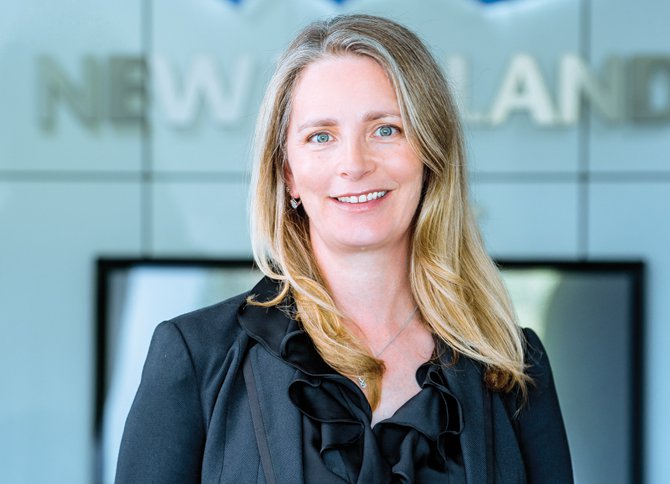5 Mar 2019
Get to know Gretta Stephens, New Zealand Steel's Chief Executive.
What part of your background or training as an engineer best prepared you for a chief executive role?
Engineering skills that serve me well in my role include analytical and critical thinking, problem solving and clear communication. Engineers tend to frame problems in a positive way as challenges and opportunities, which is motivating. My experience in the early days of my career working on the shop floor in operations keeps me grounded. It’s our operators and tradespeople that mine the sand, make the metal and form it into our products, so it’s important not to get disconnected from their day-to-day reality.
You were previously General Manager of NZ Aluminium Smelters. What were the biggest factors influencing your decision to change roles?
This move was about continuing career development. The role leading the New Zealand and Pacific Islands part of the BlueScope portfolio has more complexity and brings with it the challenge of learning a new industry. In addition, the opportunity to grow my career while remaining in New Zealand was very attractive as my next role within the previous business would have required me to move to another country.
You moved from the bottom of the South Island to near the top of the North with this change. What advice do you have for other leaders contemplating relocating for a role?
Moving is always a big decision and is often harder on your family than it is on yourself. They need to be on board. It is important to spend time looking around the region, housing, schools etc.

Gretta Stephens, New Zealand Steel's CE
From a professional standpoint, do your due diligence on the company you are joining, as cultural fit and aligned expectations are extremely important to a successful transition. The interview process is two-way.
You’re Australian born, what are your observations about the biggest differences being a chief executive in New Zealand as opposed to Australia?
While I wasn’t a chief executive in Australia, one of the things I have enjoyed in chief executive level roles in New Zealand is how small we are as a country. It means we can have strong productive networks between corporates, through industry associations such as Business NZ and with government.
What is your company’s biggest focus in the short term?
For NZ&PI it is to ensure our business is cash break-even at the bottom of the commodities cycle to ensure we are a business that is resilient through all the ups and downs. Steel is a globally-priced commodity, as are many of our raw material inputs, and the prices vary quite dramatically. For long-term sustainability we cannot be losing money when prices are at the extreme ends of the cycle.
And in the long term?
It’s an enormous challenge managing the transition to a zero-carbon economy when the technology of producing steel inherently produces carbon dioxide. The majority of our emissions are the result of the chemical reaction to produce iron from iron oxide. Coal remains an irreplaceable raw ingredient in steel production anywhere in the world – carbon in coal is the essential ingredient for extracting iron from iron sands. Whilst we have been proactive in supporting innovative technologies being developed such as LanzaTech and CarbonScape, the reality is there are currently no alternatives for the use of carbon in steel manufacture.
What advice do you have for other engineers aiming for the C-Suite?
Don’t be in too much of a hurry. Take opportunities to broaden your experience. The further you move up the tree, the less being a good engineer will determine success. You also need to learn leadership, influencing skills, health and safety, continuous improvement and the commercial side of business.




